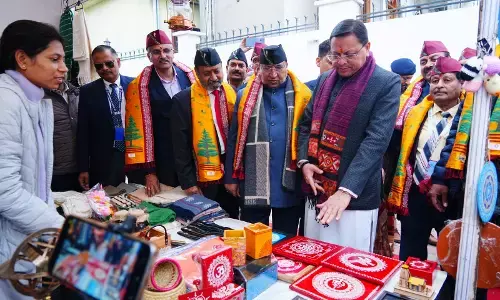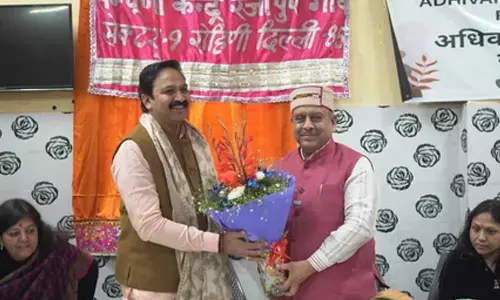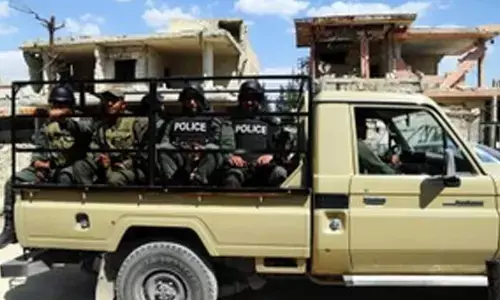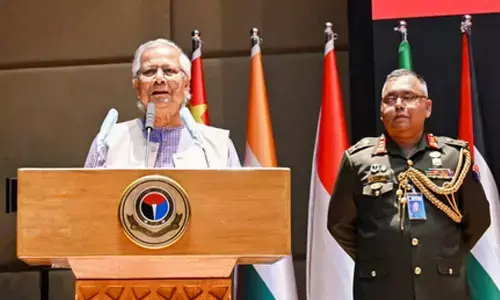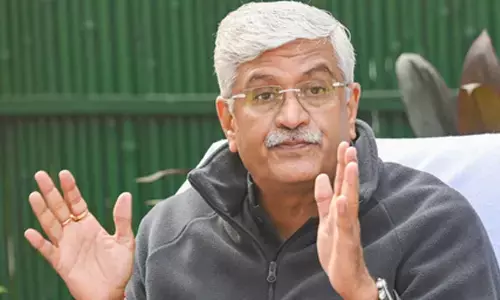Reality-Check on social relations

Reality Check on Social Relations. An advertisement for apartments on sale with a crude ‘No Muslim’ sign has drawn general disapprobation and particularly from the rights activists.
The case in point belongs to an urban metro which is none other than Mumbai, and as such the voices of protests have been of much higher decibels–Mumbai that is variedly described as a maximum city, maya nagri with its denizens of Bollywood amid other charms and glitz
.jpg) An advertisement for apartments on sale with a crude ‘No Muslim’ sign has drawn general disapprobation and particularly from the rights activists. Not the first of its kind, it is a tipping point of a continuing social malaise. The so, called developed countries too have not been free of such prejudices in different garbs––the Blacks in the US, racial discrimination in the UK, and the EU’s never-ending émigré problem.
An advertisement for apartments on sale with a crude ‘No Muslim’ sign has drawn general disapprobation and particularly from the rights activists. Not the first of its kind, it is a tipping point of a continuing social malaise. The so, called developed countries too have not been free of such prejudices in different garbs––the Blacks in the US, racial discrimination in the UK, and the EU’s never-ending émigré problem.
However, multiculturism in India, born as it is out centuries-old ethos, has been the country’s forte and, as such, cases of discrimination on the basis of caste and community as reported from time to time are cause of understandable concern. The case in point belongs to an urban metro which is none other than Mumbai, and as such the voices of protests have been of much higher decibels–Mumbai that is variedly described as a maximum city, maya nagri with its denizens of Bollywood amid other charms and glitz. Yet, the problem has not been exclusively urban-based and has been all-pervasive.
Some social studies seem to link it with the rise of the new middle class at varied social layers. The case in point, however, basically relates to the nature relationship between the two major communities, it calls for a deeper scrutiny by on the part of social scientists as indeed at the political level. This curious estrangement surfaces in different forms of which communal tension is the most virulent and reprehensible aspect.
Indeed, there is need for introspection on all sides, the minority or others. In quite a substantial sense, the untoward happens invariably the wake of circumstances beyond the control of the saner sections of society. In all such cases it so happens when a miniscule militant fringe is able to foist itself over the will of peaceable sections and indulge in mischief-making. The problem has a socio-historical background extending well back into the pre-independence era. However, the context went through a sea-change with the coming of freedom and the country opting for the secular concept of governance with a strong conviction that all kinds of discrimination would disappear with the passage of time and economic advancement.
Those engaged in the process of building anew, however, did not anticipate the imponderables like the role of the political groups standing on the other side of the fence. It is futile to imagine that the communal virus has been really ever absent at any point of time, but what is of greater concern is the persistence of some with an attitudinal behavior aiming at perpetuating the divide.
The shame, however, lies in the fact of the intermittent occurrence of riots or riot-like eruptions compared to which the Mumbai incident would seem to be a harmless act of a business dunderhead. Yet, it all this sounds odd in a society professedly poised for a big leap forward in the 21st century. The process of integration suffers most. If there was any opportune moment to find a lasting answer to the problem, it is now.
Similarly the recent happenings Muzaffarnagar have raised certain pertinent questions. It is not only the political class that stands completely exposed for its duplicitous role in starting the riots, The neutral opinion-makers of the media and social analysts too have since been at pains to explain away the situation as just localized and confined Jat-Muslim tensions. But the events as have unfolded in the course of time points out to a deeper social malaise.
Frankly, there is yet to see the final end of the tensions and a let-up in the hostility in the real sense of the word. Also, terming it as merely one-off affair is not enough and as also recalling the uninterrupted harmony and bonhomie of the past existing between the two sections. Even if that has been so, the bitter truth is that more recently the threat of a khap panchayat on the eve of Muharram could be warded off partly due to an alert administration in a once-bitten-twice-shy mode and partly thanks to the last-minute change of heart on the part of the khap organizers.
The Jats and Muslims of the area have standing complaints of harassment by local officialdom. Obviously, mutual suspicions have continued on both sides given the best of intentions. Months have elapsed but large chunks of Muslims who fled their homes during the riots have shown little inclination to return to their moorings.
This is nothing short of a paradox in the existing scenario when political heavy-weights are once back again to their convenient pastime of wooing the voters through their favorite vote-bank techniques for electoral dividends. This is all being done with supreme indifference towards the immediate tasks requiring a long-term solutions to resolve the core issue.
Even the far right BJP leadership has had no compunction in resorting to similar tactics–Mr Modi’s latest turn-about on the minority question being a patent example. Without losing much time he has chosen the path of reconciliation towards the hitherto-ignored as if expendable Muslim factor in politics. As a result, all have been bending over backwards promising the neglected sections a fair deal. In comparison, the Congress would appear much on the side of consistency notwithstanding the long list of its own defaults and whose contribution in muddling situation has been no less.








